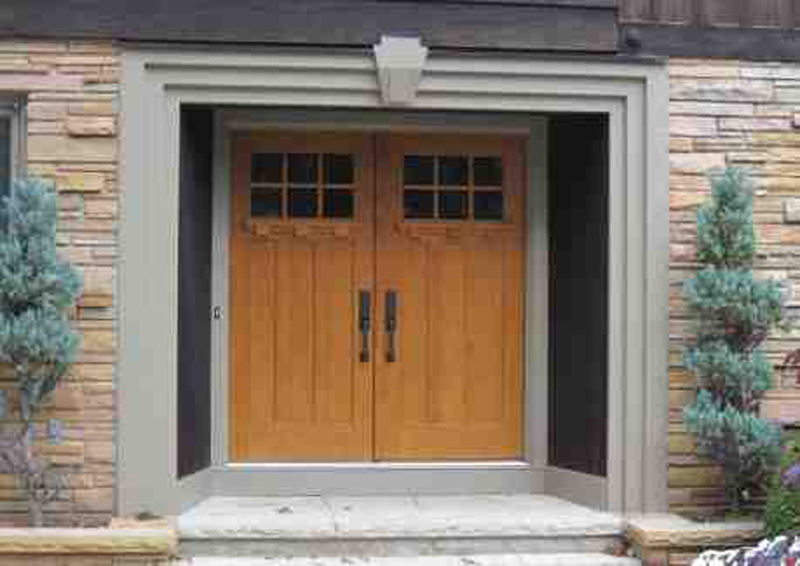Choosing the right exterior door is a big deal for homeowners, and not just because an exterior door is the first thing your guests see when they come over. An exterior door also plays a big part in the security of your home and a small role in your home’s energy efficiency. So how do you choose the right exterior door that checks off all the boxes on your door checklist?
Know what door you need
For homeowners looking to replace your existing entry door with a door of the same size, measure the door to make sure you buy the right size. Next determine if the door swings in or out, which is called an inswing or outswing. Last, determine how much of a window/lite you want in your door, and if you have a sidelite (or two), which is a pane of glass next to your door. If you don’t want to measure or select the door, or you want to install a larger door,
contact a contractor to choose and install your entry door.
If you’re thinking of buying a larger door, or adding more sidelites/sidelights, a contractor can handle all the reframing that comes with installing a new, and larger door.
Contact a contractor to get a free quote for the job.
Once you know the size of your door, now it’s time to decide what kind of door you want: wood, fiberglass and steel.
– Wood doors can be divided into two categories: solid wood and solid wood core. Solid wood core doors have a foam insulation, giving them an insulating value of R-5. Solid wood doors are strong and sturdy, and give you beautiful curb appeal. Wood doors do need regular maintenance over the life of the door, so expect some refinishing work. Wood doors are typically more expensive than fiberglass or steel doors.
– Fiberglass doors tend to be energy efficient, built with an insulating foam core that can withstand whatever our Wisconsin weather can throw at it. Fiberglass doors have a wood-grain appearance, but won’t crack or warp over the life of the door. Fiberglass doors are very affordable, with pricing usually starting in the $200 to $300 range.
– Steel doors are strong and durable and can take anything—-anything—-our Wisconsin weather throws at it. Steel doors also have a foam core for energy efficiency. They are not prone to warping or cracking, and the cost is very reasonable, often falling in the same price range as a fiberglass door.
Decide whether a storm door is right for you
Storm doors have three key benefits: 1) increasing the air flow of your home during the warmer months 2) reducing the effects of the weather on your home and 3) lowering the amount of heat loss seeping through your exterior door. If your doors are exposed to the outside weather, and you have an older, good quality door, a storm door makes sense. Storm doors add another layer of protection to your door, and can increase the life of the door. If you have a newer, high quality exterior door, you may want to do your research. New doors often achieve peak high efficiency, making a storm door not cost effective in the long run.
There’s one more factor to consider: sunlight. Adding a storm door can cause heat to build up and damage your exterior door if your door is exposed to direct sunlight for more than a few hours a day. If so, there are storm doors with vents that allow the heat to escape.
In the end, it’s a decision that you need to make dependent upon your home. If you install a storm door, will you use the air conditioning less because your home’s ventilation will improve? Are your exterior doors directly exposed to the wind and weather? Do you need the storm door as an extra layer of security? Are you losing heat through your door during the cold winter weather?
Don’t guess if you don’t know
The door you choose depends on what you are looking for: appearance, security, energy efficiency, or a low-maintenance or maintained door. If you feel like you don’t know what size exterior door you need, how to install a sidelite, what kind of door is right, or what you need to do to install your exterior door,

